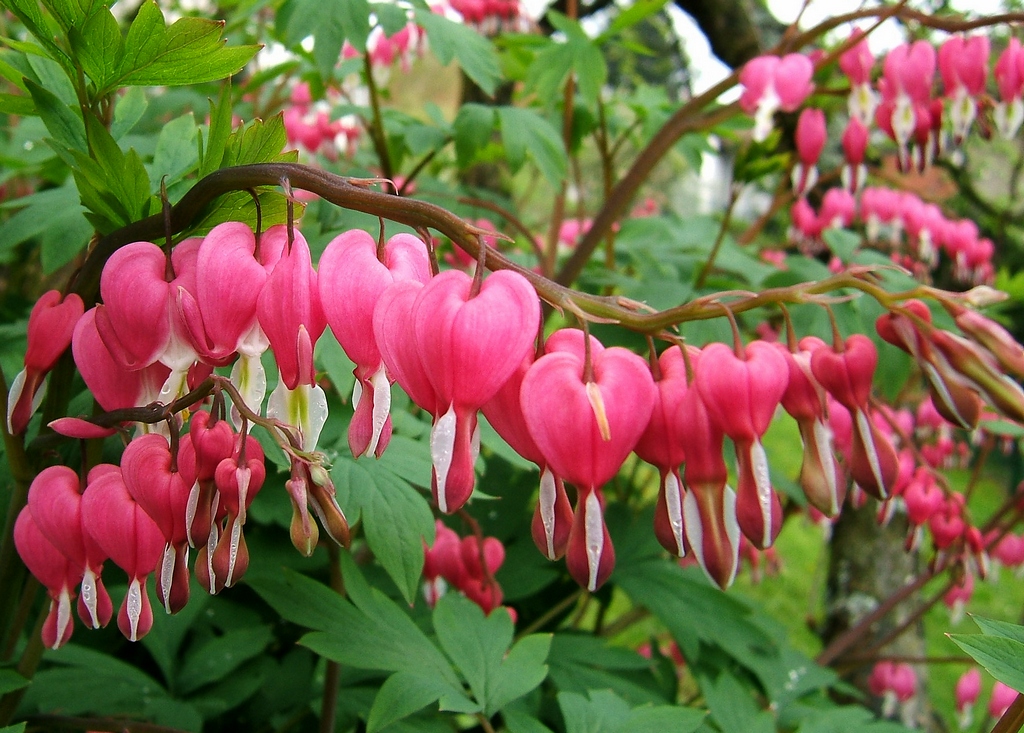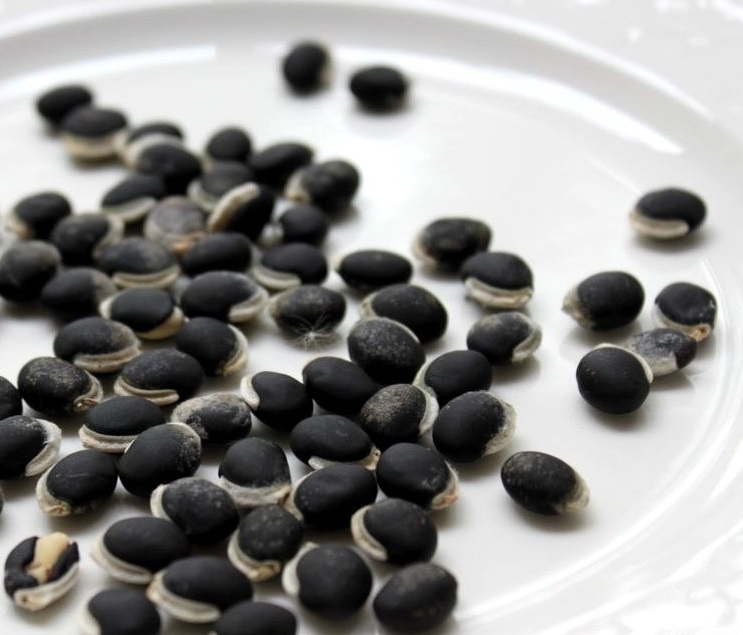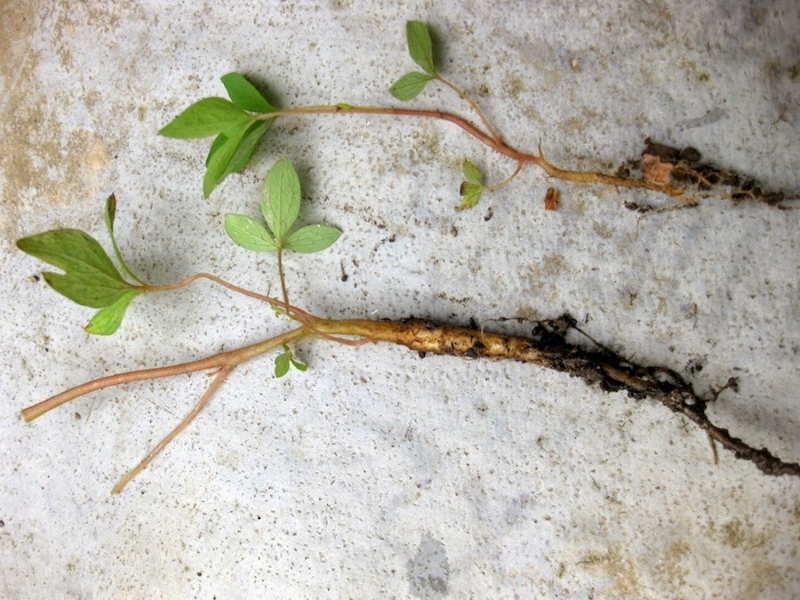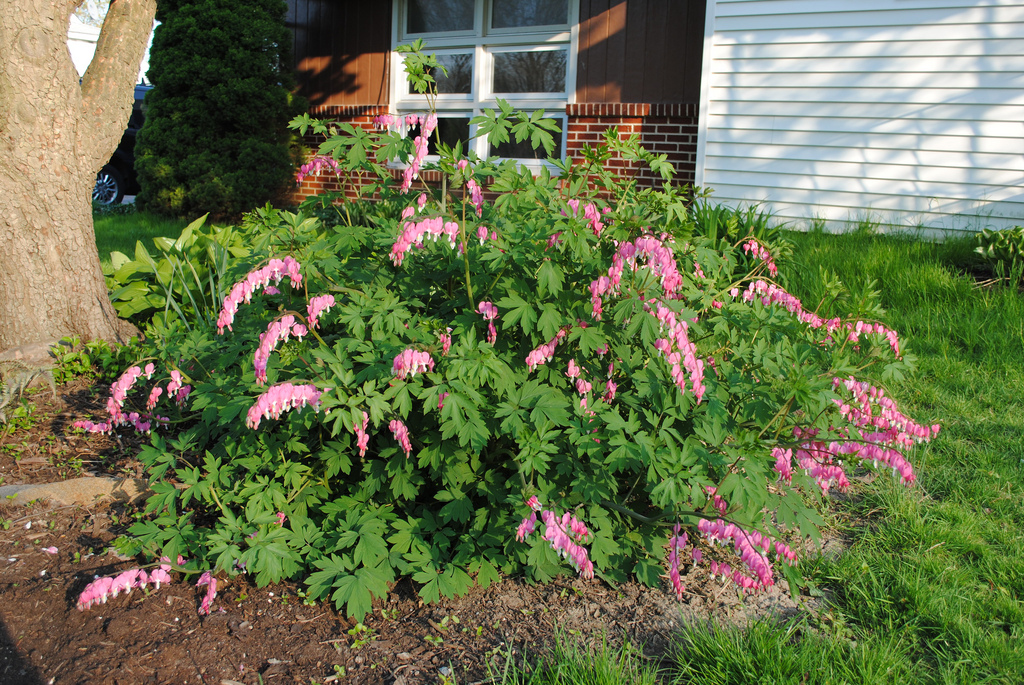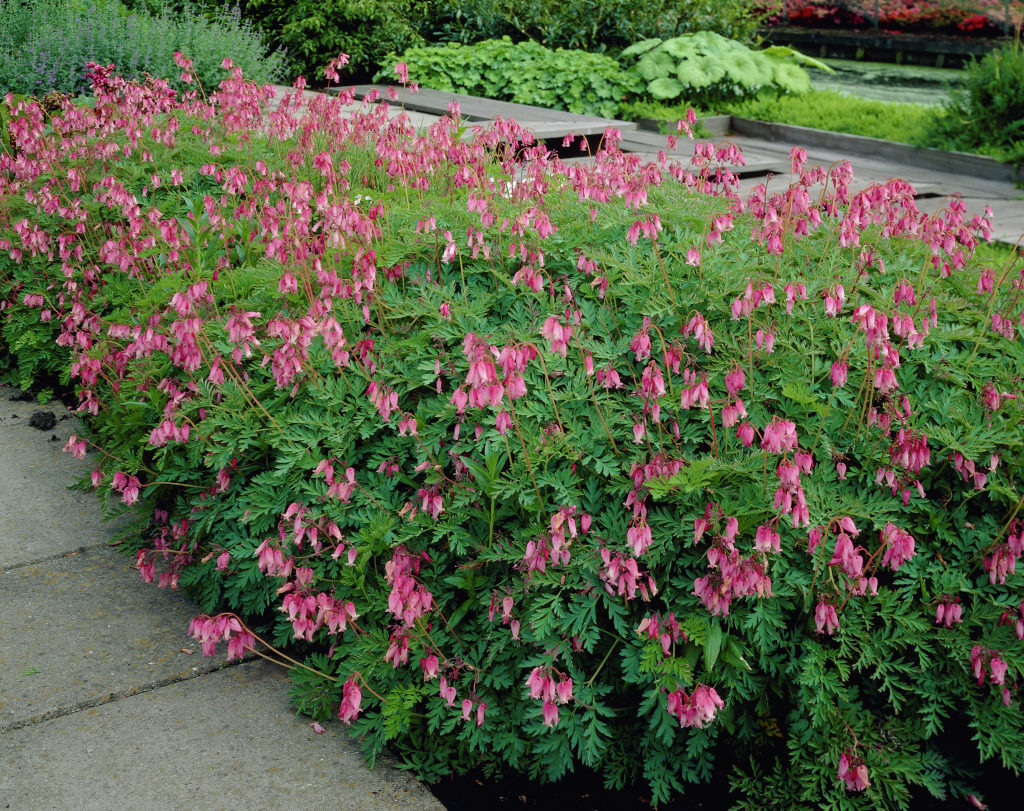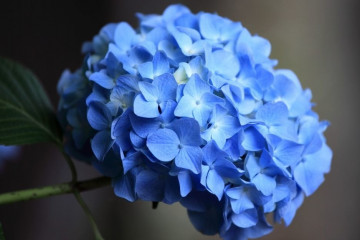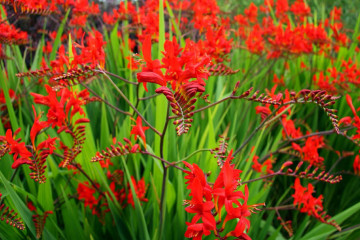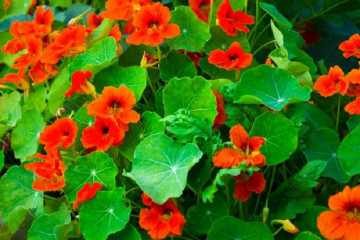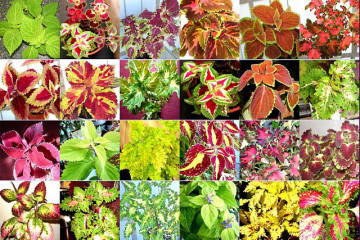Dicenter flower - planting and care in the open field
Content:
Dicentra, or "broken heart", is a herbaceous shrub, which is distinguished by the original shape of flowers and a pleasant unobtrusive aroma. The culture belongs to the Poppy family. Depending on the species, it can be annual or perennial. In the wild, the plant can be found in North America, China and the Far East. Until recently, the dicenter was rarely grown on personal plots, but now its popularity is growing.
Dicenter characteristics: varieties and varieties
The dicentra is a herbaceous shrub, the height of which reaches 0.3-1.0 m, depending on the species. The aboveground part dies off for the winter, and grows back with the arrival of spring. It is characterized by upright branched shoots or lodging shoots.
The root system at the dicenter goes into the deep layers of the soil. It consists of thickened processes that resemble finger tubers in appearance. They contain a supply of moisture and nutrients.
The stems of this culture are fleshy, juicy. They have a smooth, reddish brown surface. The leaves are pinnately dissected, on the shoots they are located far from each other, since for the most part they are concentrated in the basal rosette. The color of the plates can vary from olive to dark green. Dicenter flowers reach 2 cm in length. Their color can be white, pink or yellow.
Therefore, it is worth considering the most popular types and their features:
- Dicentra magnificent or spectabilis (Dicentra spectabilis). This species is characterized by a large spreading bush and is a perennial. Forms branched shoots up to 1 m. It is distinguished by racemose inflorescences 15 cm long. At the base of the bushes dense rosettes of leaves are formed. The duration of flowering at the excellent dicenter is 2.5-3 months. This species can withstand low temperatures, but needs shelter. The most common varieties of dicentra are magnificent: Valentina (dark red flowers with white petals at the bottom), Alba (with white flowers), White Gold (with a yellow tint of foliage and snow-white flowers).
- The dicenter is beautiful (Dicentra formosa). A perennial culture with a bush height of up to 30 cm. The leaves have long petioles and are collected in a basal rosette. The upper surface of the plates is green, and the lower one has a bluish tint. The flowers are pink-purple in color, collected in inflorescences. This type of culture is characterized by long flowering throughout the summer. Popular varieties: Aurora (with white-pink flowers), Adriana Blum (with bluish foliage and pink flowers), Lava Hearts (with white-purple flowers).
- Climbing dicenter (Dicentra scandens). It is a liana with shoots up to 2 m long. The stems are capable of spreading along the ground or on a support. Petiole trifoliate leaves are located along the entire length of the branches. Inflorescences are formed not only at the ends or nodes of the shoots. The most common variety of climbing dicentra is the Golden Vine. It features bright yellow heart flowers.
- Dicentra excellent or exceptional (Dicentra eximia). A dwarf plant with a height of 25 cm. It is characterized by dark green leaves, which are in many ways similar to a fern.The flowering period of this species is 2 months. The plant does not suffer from drought. Common varieties: Stuart Butman (with a pink tinge of buds).
Planting a plant
You can plant a dicenter on the site with seeds and seedlings. Each of these methods has certain characteristics. Therefore, you need to study them in advance.
Seed planting
This method is quite laborious. But on the other hand, it makes it possible to get many young seedlings at the same time. Dicentra seed retains its germination for 2 years after harvest. Therefore, it is important to find high-quality planting material that can germinate.
Planting seeds should be done in August-September or February-March. To do this, you need to prepare wide containers with drainage holes and fill them with nutritious loose soil. After that, moisten the substrate well and deepen the seeds by 0.5 cm. After that, the containers should be placed in a shaded place with a temperature of 18-20 ℃ above zero and covered with glass.
When shoots appear, the containers should be rearranged on a light windowsill. During this period, it is important to ensure that the soil does not dry out. As soon as the seedlings get stronger, they need to be adapted to the external environment. To do this, on the first day, remove the glass for 30 minutes, and with each subsequent increase this interval by half an hour. After a week, the shelter can be completely removed.
Planting seedlings
Young seedlings of dicentra must be planted in a permanent place in the spring, when the ground warms up enough. Before that, it is necessary to dig up the area to the depth of a shovel and carefully remove all the roots of perennial weeds.
Algorithm of actions:
- Dig holes 40 cm deep at a distance of 50 cm from each other.
- Place a 7 cm thick drainage layer on the bottom of the recess.
- Put a mixture of leaf soil with compost on top.
- Place a seedling in the center.
- Fill the voids with earth, water.
If there is heavy soil on the site, then before planting seedlings, it is necessary to add sand to it and add limestone chips.
Watering and loosening the soil
It is not difficult to take care of the dicenter. Seedlings should be watered moderately, avoiding stagnation of moisture and drying out of the roots. It is also important to loosen the soil at the base of the seedlings so that air can easily penetrate to the roots.
During periods of drought, watering should be carried out more often as the top layer of the earth dries out. At least 5-6 liters of water must be poured under each plant. And so that the roots of the plant do not dry out, and moisture does not evaporate from the ground so quickly, it is necessary to mulch the root circle of the plant with peat or humus. It will also help prevent crusting on the soil surface.
Reproduction methods
To obtain new seedlings of dicentra, it is recommended to use the method of cuttings and division of the rhizome.
In the first case, for reproduction, it is necessary to use the basal processes that appear in April. For rooting, cuttings with a "heel" 12-15 cm long are suitable. After that, dust the lower cut with a root former and plant in nutrient soil. Cover the appendages on top with a plastic bottle and foil. This will create a greenhouse effect inside and speed up rooting.
After the seedlings get stronger and grow, the shelter must be removed. In the first year, young plants should be indoors in winter, but only with the arrival of spring can they be planted in a permanent place.
In the second case, in early spring or early autumn, it is necessary to dig up an adult bush of dicentra more than 4 years old. Then thoroughly clean the roots from the soil, and then rinse.After that, put the plant in a shaded place so that it withers slightly. This will allow you to divide quickly and accurately.
After 2-3 hours, cut the thickened part of the root into several parts with a sharp knife. Each of them should have 3-4 growth points and a well-developed root process. After the procedure, fresh cuts must be sprinkled with charcoal, and then the cuttings must be planted in a permanent place. After that, the seedlings should be watered abundantly.
Top dressing and fertilizers
Caring for this crop also includes the timely feeding of the plant. In the spring, during the active growing season, the bushes must be fertilized with organic matter twice at a frequency of 2 weeks. Mullein (1:10) or bird droppings (1:15) are best suited for this. In the absence, you can use mineral fertilizers with a high nitrogen content, such as urea or ammonium nitrate 30 g per 10 liters of water.
During the period of bud formation, the flower of the dicenter should be fertilized with superphosphate (40 g per 10 l) and potassium sulfide (30 g per bucket). Pour the bush under the root with the resulting solution. This should be done in the evening.
Plant transplant
It is necessary to transplant the dicenter when the bush reaches the age of 4-5 years. In this case, the plant needs to choose a new place, well lit or in partial shade. This procedure must be carried out in the same way as planting young seedlings.
Pruning the dicenter
After the bush has had time to bloom, it is necessary to remove all peduncles when they begin to turn yellow. More drastic pruning should be done in the fall. This will help the plant to have a good rest in winter.
Pests and diseases
According to the description and characteristics, the bleeding center is highly resistant to diseases and pests. But if the growing conditions do not match, the plant's immunity decreases.
Common problems:
- Ring spot. With the development of the disease, the shoots and leaves of the dicenter become covered with a bluish bloom. This interferes with photosynthesis and leads to plant wilting. It is difficult to get rid of this viral disease, therefore it is easier to prevent it. To do this, it is necessary to treat the bushes of the dicentra with fungicides several times per season. You should also promptly remove weeds, leaf litter and old branches.
- Tobacco mosaic. The characteristic sign of the lesion is black annular spots on the leaves. As a result, the plates stop developing and shrink. The disease negatively affects the plant, and becomes the reason why the dicenter does not bloom. To fight it is necessary to remove diseased shoots and leaves, as well as to carry out preventive spraying with fungicides: "Skor", "Fitosporin".
- Aphid. The pest feeds on the juice of young shoots, which significantly weakens the plant. To destroy the pest, it is recommended to spray the bushes with "Inta-vir", "Karbofos".
Flowering period and care during this period
Flowering at the dicenter begins at the end of May. During this period, graceful inflorescences, similar to necklaces, appear at the ends of the shoots. Under their weight, the branches bend down and become arched. The upper part of the buds is in the shape of a heart, and at the bottom there are petals that diverge and look out into a slot in the form of a rolled tube.
The plant blooms twice a season. The duration of the first wave is 3-4 weeks. In the middle of summer, the bush gradually fades, only a few young shoots remain. In August, when the heat recedes, the plant blooms again. After that, bolls are formed, in which the seeds ripen.
After flowering, care for the dicenter consists in the timely removal of wilted shoots, which will help redistribute the strength of the plant.
Preparing for winter
The magnificent dicentra Alba, like other perennial crop varieties, must be covered for the winter with a layer of peat or humus. This will help prevent the top of the roots from freezing if there is not enough snow available.
It is necessary to remove the shelter in early spring, without waiting for stable heat. During this period, with the threat of return frosts, it is better to use agrofibre to preserve young shoots.
Use in landscape design
This plant is often used in shady and arid garden areas, rockeries, alpine hills and rocky slopes. At the same time, the dicenter looks great singly and in group compositions.
As a self-sufficient plant, it should be planted against the backdrop of a green lawn or conifers. The best neighbors for her might be:
- hosts;
- bought;
- lungwort;
- daffodils;
- hyacinths;
- tulips.
You can also combine several types of flowers in group plantings with different colors and a simultaneous flowering period. The dicentra also feels good under the shade of tall crops.
The dicentra is a foreign guest, which is distinguished by long flowering with minimal care. The crop can be planted in places where other perennials are unable to grow. Therefore, the popularity of the dicenter is growing. This is no coincidence, because few plants are so unpretentious and able to please the eye throughout the season.
